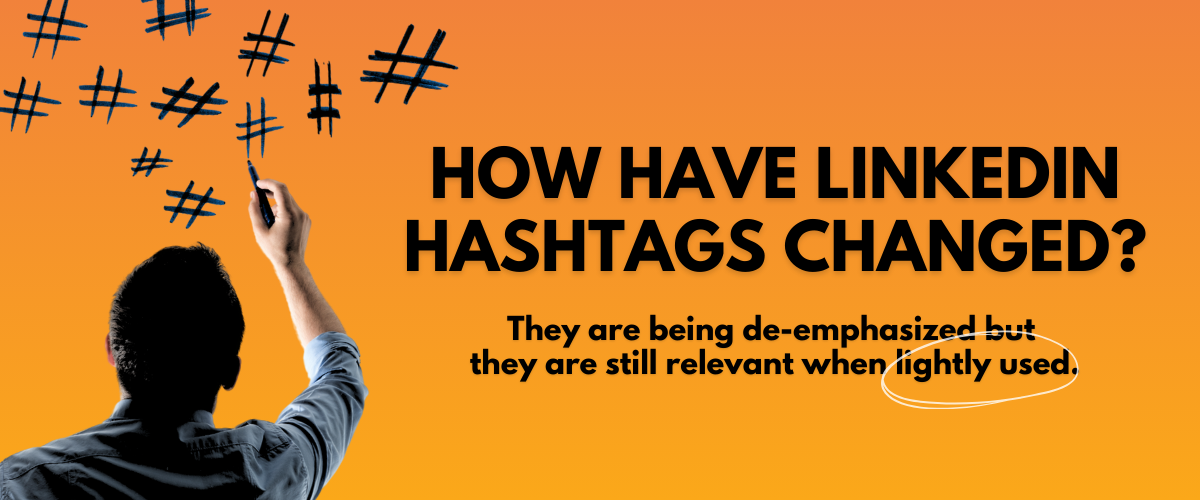Hashtags used to be the secret weapon of social media growth. Add a handful of trending tags, and suddenly your post could find a wider audience. But in 2025, things have shifted — especially on LinkedIn. While hashtags aren’t gone, their role has changed. For B2B companies like Lexabi Communications, understanding how to use hashtags effectively is key to maintaining visibility, authority, and engagement.

How LinkedIn Hashtags Have Changed
- No more hashtag following: LinkedIn has removed the ability for users to follow hashtags, making discovery less reliant on tags alone.
- Hashtag feeds are fading: Dedicated hashtag feeds are being phased out, reducing their role as discovery tools.
- Keyword focus: LinkedIn’s algorithm now leans more on keywords inside your content — in headlines, post text, and profiles — than on hashtags themselves.
That doesn’t mean hashtags don’t matter. Instead, they serve as topic signals that help categorize your content and improve search visibility.
Hashtag Usage Stats: LinkedIn vs Instagram vs Facebook vs X
To understand where LinkedIn stands today, it helps to compare across platforms:
- Instagram: Posts with 11+ hashtags on smaller accounts can see up to 79% higher engagement. But Instagram is now de‑emphasizing hashtags by removing the ability to follow them. Repetitive or spammy hashtag use can reduce reach. Best practice: use fewer, highly relevant hashtags.
- LinkedIn: Best practice is 3–5 hashtags per post. Using more can dilute impact, and hashtags are now secondary to strong keyword usage and engagement.
- Facebook: Hashtags have minimal impact. 1–2 well‑chosen tags can work, but overuse often looks spammy. Engagement relies more on content type (video, group posts) and page trust.
- X (formerly Twitter): As of 2025, hashtags are banned from paid ads. For organic posts, hashtags still work but fewer, more relevant tags are encouraged.
The takeaway: hashtags are losing dominance across platforms. Content relevance, quality, and engagement signals matter more.
Why Platforms Are De‑Emphasizing Hashtags
- Smarter algorithms: Platforms can now understand context, keywords, and user behavior without relying solely on tags.
- User behavior changes: Discovery is happening more through recommendations, feeds, and short‑form video than hashtag searches.
- Spam reduction: Hashtag stuffing and irrelevant tagging led platforms to tighten controls.
- Content evolution: High‑quality visuals, captions, and video performance now outweigh hashtags in driving reach.
Why Hashtags Still Matter on LinkedIn
Even though hashtags have less weight than before, they still:
- Act as search signals to categorize posts.
- Support content discovery for niche topics.
- Help reinforce brand identity when paired with branded tags.
- Provide clarity for algorithms and users alike.
But they should be used strategically, not stuffed.
A B2B Hashtag Strategy for 2025
For B2B businesses like Lexabi Communications, here’s a simple framework:
1. Define Your Content Pillars
Focus on 3–5 themes your audience cares about, such as:
- Social Media Strategy
- Content Marketing
- Branding & Design
- Email Marketing
- Digital Growth for SMBs
2. Create Three Hashtag Tiers
- Branded Hashtags: e.g. #LexabiTips, #LexabiGrowth, #LexabiBranding
- Niche Hashtags: e.g. #B2BSocialMedia, #SmallBusinessMarketing, #ContentStrategy, #DigitalBranding
- Broader Hashtags: e.g. #MarketingTrends, #SocialMediaGrowth, #BrandStrategy
3. Stick to 3–5 Hashtags per Post
Balance one branded tag, a couple of niche tags, and one broader tag for reach.
4. Prioritize Keywords in Copy
Hashtags don’t replace keywords. Use phrases like “social media strategy for small businesses”, “email marketing best practices”, or “digital branding tips” naturally in your posts.
5. Track & Optimize
- Monitor analytics to see which tags attract impressions.
- Compare engagement across branded, niche, and broader hashtags.
- Adjust strategy quarterly to reflect trends and audience behavior.
Key Takeaways
- On LinkedIn in 2025, hashtags are secondary signals, not the main driver of reach.
- Other platforms (Instagram, Facebook, X) are also scaling back hashtag importance.
- Use fewer, highly relevant hashtags instead of stuffing posts.
- Pair hashtags with keyword-rich content for maximum visibility.
- B2B brands should focus on building authority through branded and niche tags.
- Engagement, quality content, and consistency matter more than hashtag volume.
